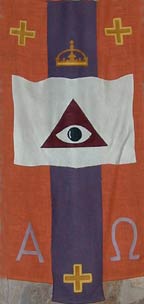 he Westminster Confession -
Historical Note
he Westminster Confession -
Historical NoteT he Westminster Confession -
Historical Note
he Westminster Confession -
Historical Note
In 1647, the Scottish General Assembly adopted the Westminster Standards for use in the kirk, replacing the Scots Confession of 1560 and the Heidelberg Catechism. The standards came to New England with the Puritans (Independents) and to the Middle Atlantic states with the Scotch-Irish Presbyterians. In 1729, the standards were adopted as the confessional position of the newly organized Presbyterian synod in the colonies and have played a formative role in American Presbyterianism ever since. The Westminster Standards represent the fruits of a Protestant scholasticism that refined and systematized the teachings of the Reformation. The standards lift up the truth and authority of the Scriptures, as immediately inspired in Hebrew and Greek, kept pure in all ages, and known through the internal witness of the Holy Spirit. Divine sovereignty and double predestination are also emphasized. In appealing to Scripture to formulate a covenant theology, the standards had important implications for political thought and practice, reminding both ruler and people of their duties to God and to each other.
Quoted from The Constitution of the Presbyterian Church (U.S.A.), Part I, Book of Confessions; Geneva Press, Louisville, KY. Copyright �1996 by the Office of the General Assembly,
Presbyterian Church (U.S.A.). All rights reserved. No part of this publication may be reproduced without the prior permission of the publisher, except as noted.